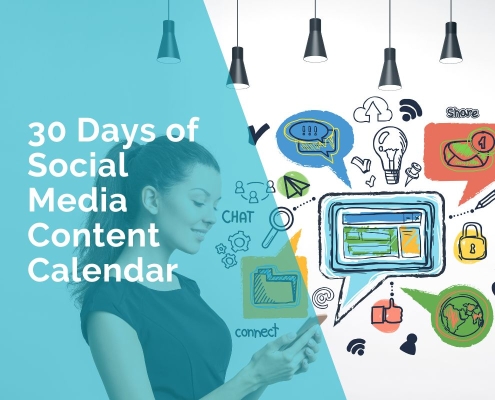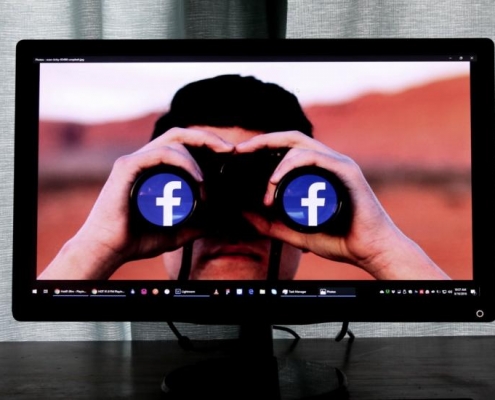Social Media Monitoring: A Vital Tool for Modern PR and Communication
Social media isn’t just about cat videos and holiday snaps anymore. These days, it’s where big news, brand moments, and breaking stories are shared — all in real time. It’s become a global hub for ideas, trends, and movements, with nearly half the world logging in every month.
Every post, comment, and mention has the power to spread gossip, spark trends, or even go viral.
For PR and communication teams, this landscape is both a challenge and an opportunity. Whether your brand is being talked about directly or not, chances are there’s a conversation happening that involves your industry, competitors, or product category. These conversations are happening constantly — and being part of them matters.
What is social media monitoring?
In its simplest form, social media monitoring is the practice of tracking and analyzing online mentions and discussions relevant to your brand, industry, competitors, or products. But it goes deeper than just checking your brand’s notifications or reading your own comments section.
Effective social media monitoring includes:
- Direct mentions of your brand or organization
- Comments and replies on your brand’s posts
- Conversations where your brand is not tagged
- General discussions about your products or services
- Industry and trend-based commentary
- Mentions of competitors and their offerings
Through this, brands can gain a comprehensive view of their digital reputation, identify emerging issues, analyze customer sentiments, and keep an eye on industry trends.
Why is social media monitoring important?
Social media monitoring isn’t just an add-on—it’s a vital pillar of modern social media management, PR, marketing, and customer service. Here’s why it matters:
1. Track direct brand mentions
It’s critical to respond quickly and meaningfully to any direct @mentions or messages. This helps maintain good relationships with customers and stakeholders and shows that your brand is listening.
2. Understand indirect mentions
Not every user tags your account or uses a hashtag. Social media monitoring tools can catch these indirect references, offering insight into how your brand is perceived in less-controlled spaces.
3. Save time and streamline workflows
Without automation, monitoring requires jumping between platforms and manually searching for mentions. Tools can consolidate these efforts into one dashboard, saving hours of work weekly.
4. Improve customer care
Empowering a brand to be responsive to queries or concerns can increase brand loyalty. You can preemptively find and diffuse PR fires before they infect, while searching for the happy customers who can be the first brand advocates.
5. Enhance marketing play
Social monitoring can provide insights into campaign messaging, content concepts, and product development. Learn what the customers care about so that you can deliver better communication, which will be more relevant and engaging.
Building your social media monitoring strategy
Now that you understand the value, let’s dive into how to build a strong, actionable monitoring plan.
1. Set clear goals
Define exactly what you want to achieve:
- Monitor brand mentions?
- Track customer sentiment?
- Watch competitors?
- Spot emerging trends?
Each goal will guide the keywords you choose, the tools you use, and how you analyze the data.
2. Identify keywords and phrases
Include:
- Your brand name (and its common misspellings)
- Product or service names
- Competitor names
- Industry terms or hashtags
- Company leadership or spokespeople
- Taglines or campaigns
This will cast a wide net and ensure you don’t miss important conversations.
3. Choose the right social media monitoring tool
Look for features like:
- Real-time monitoring
- Sentiment analysis
- Multi-platform coverage
- Custom reporting
- Competitive benchmarking
Popular tools include:
- Brandwatch
- Hootsuite Insights
- Sprout Social
- Mention
- Talkwalker
- Meltwater
Must read: Check the top social media management tools for 2025.
4. Monitor and engage
Track conversations consistently and don’t be passive. Engage with your audience by:
- Responding to customer questions or complaints
- Thanking users for positive mentions
- Joining trending discussions relevant to your brand
Proactive engagement helps humanize your brand and build trust.
5. Keep an eye on competitors
Monitor your competitors’ social activities, reviews, and customer interactions. You can identify gaps in their service, capitalize on missed opportunities, or even adopt strategies that seem to work well for them.
6. Analyze the data
Once you’ve gathered data, dig into it. Look for patterns such as:
- Sentiment trends (positive, neutral, negative)
- Time periods of high engagement
- Recurring customer complaints or praises
- Virality factors (what kind of content spreads)
Track metrics like:
- Engagement rate
- Follower growth
- Web traffic from social links
- Conversion rates
- Volume of mentions over time
7. Collaborate internally
Share insights with relevant departments:
- Customer service can respond to unresolved issues
- Marketing can tailor campaigns using sentiment trends
- Sales can leverage positive feedback and product mentions
- Product teams can use feedback for improvements
8. Partner with influencers
Monitoring helps you spot influencers already talking about your brand or industry. Reach out to build relationships that can:
- Increase brand visibility
- Strengthen trust with your audience
- Drive more organic engagement
9. Benchmark and track progress
Set baseline metrics and measure improvements over time. Track how brand sentiment shifts, how engagement changes, and how quickly customer concerns are addressed.
10. Refine and repeat
Social media changes constantly. What worked last quarter may not work today. Use your analytics to adjust your keyword list, shift platform focus, or update your content and engagement strategies.
Final thoughts
Social media monitoring is not only spying— it’s about talking to the people, learning from others & growing oneself. In the runaway digital world of today where the brands that are not just listening are failing. It means being able to monitor the marketplace in order for a brand to be up to date and involved, sensing trends before they become conventional, and adding value through its presence.
If you are a communications professional, brand strategist, or digital marketer, you simply can’t ignore investing in social media monitoring. Think about it— If you don’t occupy the stage, someone will be writing lines for you.
***************
Suyash Siddharth












